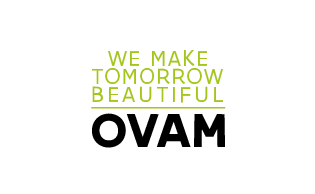14. Circular economy indicators for consumer goods
This report is part of the ongoing research at the Policy Research Centre for Circular Economy to create a framework for a monitor to guide the transition to a circular economy in Flanders. This report presents a set of indicators for the system of consumer goods, revealing how this system performs in relation to the principles of the circular economy.
In general little evidence was found that the system of consumer goods is circular or evolving towards it. The study revealed that large amounts of raw material input are needed to fulfil the need for consumer goods. While it is positive that reuse of consumer goods in Flanders seems to be increasing, the reuse centres signal that continued growth is hindered by the decreasing quality of the inflow in products. This while goods which could potentially be reused are ending up in municipal solid waste. Consumer goods could be further kept from becoming waste by increasing repair, however at the moment this strategy is only marginally implemented and documented. The total amount of municipal solid waste collected decreased compared to 2013, but has stagnated in recent years. The data also shows that there is still room for improving the selective collection of recyclable materials that now end up in residual or bulky waste.
As the consumer goods system is a grouping of very diverse goods, it proved impractical to find general indicators expressing the circularity of the consumer goods system as a whole. This created the necessity to further disaggregate the system of consumer goods, creating three distinct sub-categories, specifically for ‘textiles’, ‘electronic and electric equipment’ and ‘furniture’. This way specific opportunities and problems could be highlighted for each of these large impact categories.
- About electronic and electric equipment the most is known, due to the data available for the EPR obligations. Electronic and electric equipment waste is successfully kept out of the residual waste fraction and about 50% gets collected through official channels, where almost 80% is recycled. However, the stock of electronic and electric equipment in households is still increasing and there is a significant amount of electronic and electric equipment present in households which remains underused.
- While for textiles data is limited, there are few signals that textiles are transitioning towards a more circular system. About half of discarded textiles end up in residual waste and information on what happens to the selectively collected fraction is scarce.
- Furniture has so far seemed to stay under the radar of policymakers, resulting in very little information. Its significant material and carbon footprint however reveal that this product group should not be overlooked.
It can be noted that each of these three product groups were identified as priority product groups in the new circular economy action plan of the European Commission and thus are likely to receive increasing attention in the coming years. By continuing the current research Flanders has a chance of getting out in front of this. This report is a first step in putting together data to create a circular economy monitor for consumer goods. However, if this monitor is to further grow, it will be key to add further data to fill the remaining data gaps, for some of which new specific studies will need to be conducted. Also the industry should be further included to ensure their role in the transition to a circular economy is sufficiently highlighted. A key issue hindering the data availability on consumer goods is that they are not evident to track within the economy, as there is very little administration involved with these goods after purchase.

.png)






